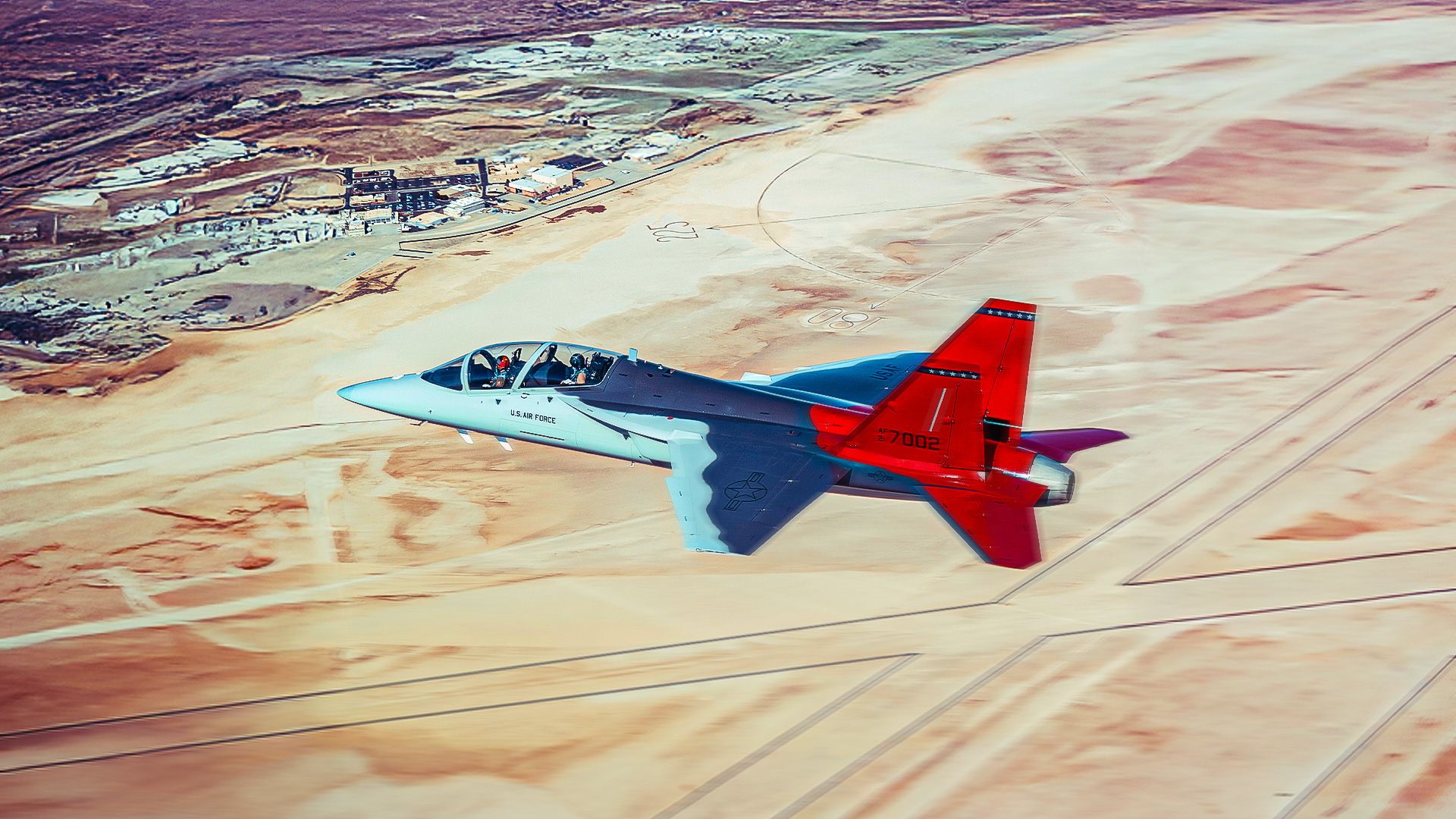The United States Air Force (USAF) is set to revolutionize its pilot training program with the introduction of the T-7A Red Hawk, a modern trainer jet developed by Boeing and SAAB. This aircraft is designed to replace the aging T-38 Talon, bringing advanced technology and capabilities that enhance training for future pilots of fifth- and sixth-generation fighter jets. The initial contract includes the procurement of 351 T-7A units at an estimated cost of $9.2 billion, with Boeing projecting total global sales to reach approximately 3,000 units.
The T-7A boasts a modular systems architecture and features embedded training software that allows it to connect seamlessly with simulators. This capability enhances training exercises, enabling pilots to experience complex scenarios without physical equipment. The aircraft’s GE F404 turbofan engine provides triple the thrust of the T-38, allowing for high-G and high-angle-of-attack maneuvers that are more akin to those expected in modern combat aircraft.
Transforming Training Methodologies
Brigadier General Matthew A. Leard, who oversees plans and programs at the Air Education and Training Command, emphasized the urgency of integrating the T-7A into the training pipeline. He stated, “The main thing that we’re focused on with T-7 right now is we’ve got to get that airplane.” With its advanced fly-by-wire avionics and superior aerodynamics, the T-7A promises safer and more effective training experiences compared to its predecessor, the T-38.
The Red Hawk enables a shift from foundational flight skills to tactical training, empowering pilots to make quicker decisions and manage complex systems earlier in their training. This transformation is critical as the USAF prepares aviators for the challenges of modern warfare. Leveraging over six decades of advancements in aircraft design, the T-7A not only outperforms the T-38 but also operates with lower fuel consumption and reduced maintenance costs.
Integrating Ground-Based and Virtual Training Systems
Another significant advancement is the integration of the T-7A with Ground-Based Training Systems (GBTS). This system employs cameras on the T-7A to create immersive training environments, allowing the USAF to replicate real-world scenarios without solely relying on live flight hours. The GBTS enables pilots to experience G-forces and complex visual environments, significantly enhancing their preparedness before taking to the skies.
The Live, Virtual, and Constructive (LVC) integration methodology further augments the training experience by combining live flights with ground-based simulators and computer-generated forces. This allows for the simulation of various tactical scenarios, including engagements with AI-controlled adversaries. Such comprehensive training environments are essential for developing the skills necessary for future air operations.
General Leard noted the potential to streamline pilot training by transitioning directly to the T-7A, potentially eliminating the need for the T-6A Texan II, which has been a staple of pilot training for two decades. As defense technology continues to advance rapidly, the utility of the T-7A may render the aging T-6A obsolete, making it the primary platform for training the next generation of USAF aircrews.
The T-7A Red Hawk is not just a technological advancement; it also carries a significant legacy. Named in honor of the Tuskegee Airmen, whose courageous acts during World War II have become a symbol of excellence, the T-7A’s red tail livery pays tribute to their bravery. The legacy of the Tuskegee Airmen, recognized with the Congressional Gold Medal in 2007, continues to inspire new generations of aviators.
In conclusion, the T-7A Red Hawk represents a significant leap forward in pilot training for the USAF, with its advanced capabilities poised to prepare future aviators for the complexities of modern aerial combat. The integration of cutting-edge technology and a commitment to honoring historical legacies reflects the USAF’s dedication to evolving its training programs for the challenges of the 21st century. As the procurement of T-7As progresses through the 2030s, the USAF is positioning itself to meet the demands of future warfare effectively.
